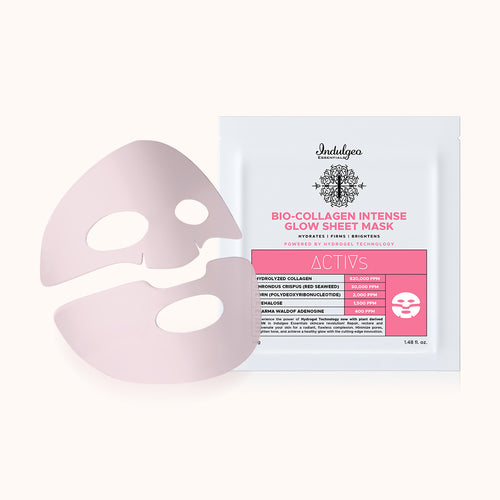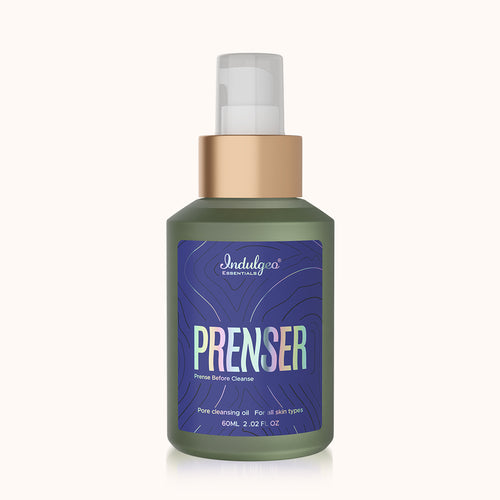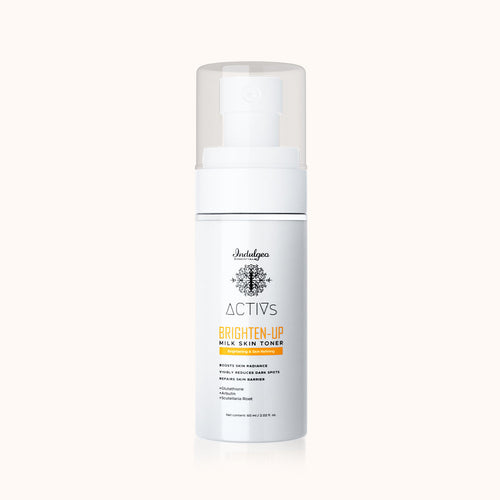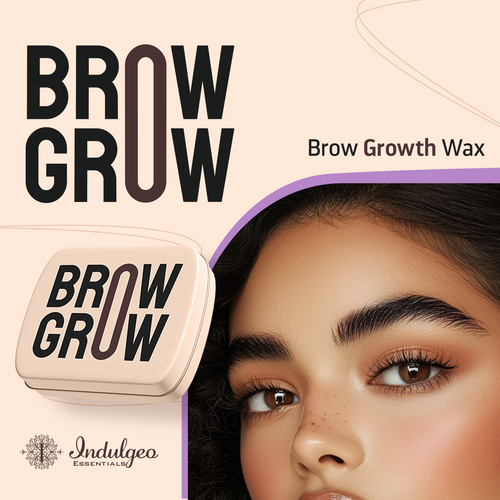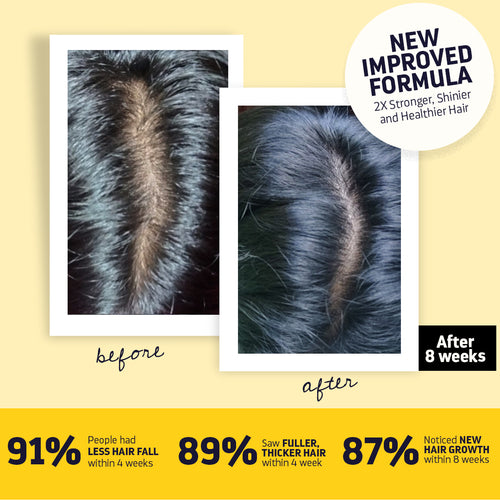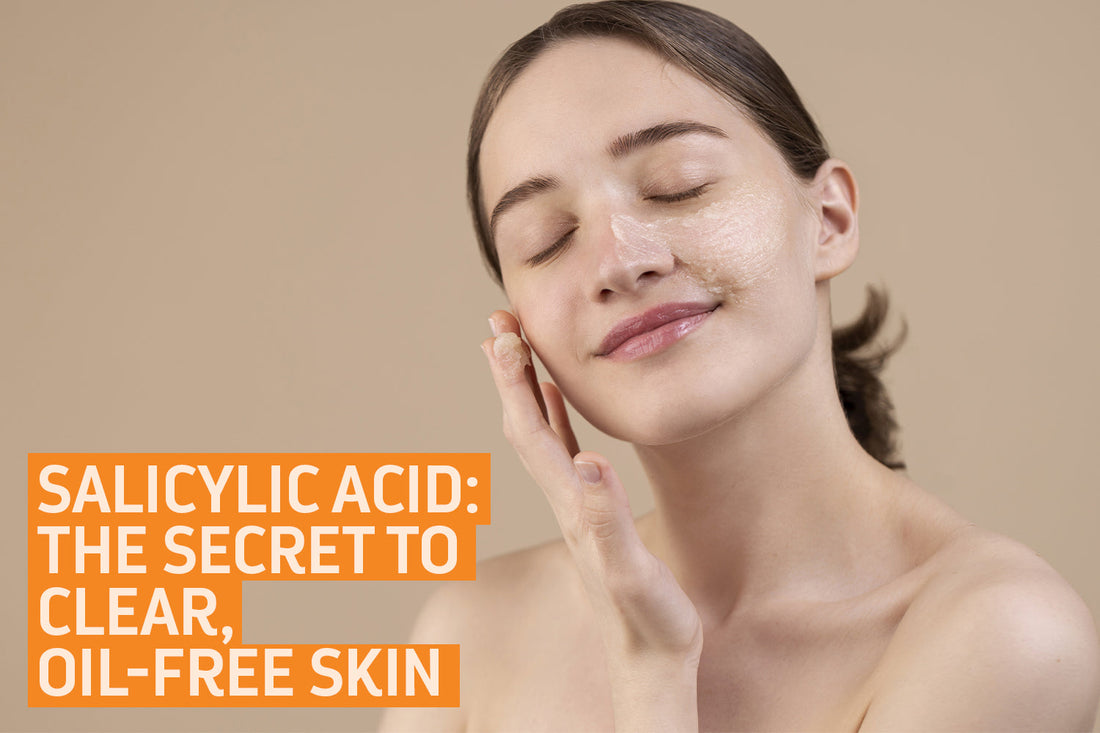
Bye-Bye Shine: The Best Face Wash for Oily Skin & How Salicylic Acid Can Help
Share
If your skin constantly feels greasy, your T-zone is perpetually shiny, and breakouts are a regular visitor - welcome to the oily skin club. Managing oily skin is all about striking the right balance: removing excess oil without over-drying, and cleansing deeply without irritating the skin barrier. One of the most important steps in this balance? Choosing the right face wash for oily skin.
In this blog, we’re diving into what makes the best facial cleanser for oily skin, why ingredients like salicylic acid are a game-changer, and how to build a routine that leaves your skin feeling clean, balanced, and shine-free.
Understanding Oily Skin: What’s Going On Beneath the Shine
Oily skin is caused by overactive sebaceous glands that produce more sebum than necessary. While sebum is essential for keeping your skin soft and hydrated, too much of it can:
- Clog pores
- Lead to acne and blackheads
- Make skin appear greasy and shiny
- Cause makeup to slide off prematurely
Hormones, genetics, climate, diet, and even stress can all play a role in how oily your skin becomes. But regardless of the cause, the first step in managing it is using the right cleanser.
Why the Right Face Wash Matters for Oily Skin
Using just any face wash won’t cut it. Some cleansers may strip your skin, causing it to overcompensate with more oil. Others might not clean deeply enough, allowing dirt, sweat, and oil to clog your pores.
The best facial cleanser for oily skin should:
- Control excess oil without drying your skin
- Unclog pores and reduce acne
- Offer gentle exfoliation to remove buildup
- Be non-comedogenic (won’t clog pores)
This is where salicylic acid face washes come into play - they’re formulated specifically to meet these needs.
Salicylic Acid: Oily Skin’s Secret Weapon
Salicylic acid is a beta-hydroxy acid (BHA) known for its oil-soluble properties. Unlike AHAs, which work on the surface, salicylic acid penetrates deep into the pores, dissolving oil and clearing out congestion. Here’s why it’s a powerhouse for oily skin:
1. Deep Pore Cleansing
Salicylic acid cuts through oil and penetrates deep into your pores, helping to remove excess sebum and dead skin cells that lead to blackheads and breakouts.
2. Exfoliates Gently
It acts as a chemical exfoliant, sloughing off dead skin without the need for physical scrubs that can irritate oily or acne-prone skin.
3. Prevents Breakouts
By keeping pores clean and bacteria at bay, it helps prevent future pimples and reduces the appearance of existing ones.
4. Anti-Inflammatory Benefits
Salicylic acid soothes redness and inflammation associated with acne, making it ideal for breakout-prone oily skin.
What to Look for in a Salicylic Acid Face Wash
Not all salicylic acid cleansers are made equal. When hunting for the best face wash for oily skin, consider the following:
- Concentration: Most effective salicylic acid cleansers have a concentration between 0.5% to 2%.
- Formulation: Look for gel or foaming formulas - they tend to work best for oily skin.
- Hydrating ingredients: Ingredients like niacinamide, glycerin, or aloe vera can balance salicylic acid’s exfoliating effects and prevent over-drying.
- Fragrance-Free: Fragrance can irritate sensitive, oily, or acne-prone skin.
Our Pick: The Best Facial Cleanser for Oily Skin
If you’re looking for a cleanser that ticks all the boxes, a salicylic acid face wash with additional calming and hydrating ingredients is your best bet.
Look for a product that offers:
- 2% salicylic acid for deep pore cleansing
- Niacinamide to regulate oil production
- Cica or green tea for soothing inflamed skin
- Non-stripping formula that leaves your skin feeling clean but comfortable
A well-balanced salicylic acid cleanser becomes more than just a face wash - it’s a preventive step toward better skin health.
How to Use Salicylic Acid Face Wash Effectively
Here’s how to get the most out of your salicylic acid face wash:
Step 1: Start Slow
Begin with once a day use - preferably in your evening routine - to assess how your skin reacts.
Step 2: Don’t Overwash
Washing your face more than twice a day can strip your skin and trigger more oil production.
Step 3: Follow With Hydration
Use a lightweight, oil-free moisturizer after cleansing. Just because your skin is oily doesn’t mean it doesn’t need hydration.
Step 4: Use SPF in the Morning
Salicylic acid can make your skin more sensitive to the sun. A good sunscreen is non-negotiable.
Face Washing Do’s & Don’ts for Oily Skin
Do:
- Use lukewarm water - not hot - to wash your face
- Pat your face dry with a soft towel
- Use clean hands and avoid scrubbing aggressively
- Stick to a consistent routine
Don’t:
- Use harsh soaps or alcohol-based cleansers
- Touch your face with dirty hands
- Layer too many actives at once (like AHA + BHA + retinol)
- Skip moisturizer or SPF
Myths About Oily Skin Cleansing - Debunked
Myth 1: Oily skin doesn’t need a moisturizer.
Wrong! Dehydrated skin can trigger more oil production. Hydrate with a gel-based or oil-free formula.
Myth 2: You should wash your face multiple times a day.
Over-washing can strip the skin and disrupt your barrier, leading to even oilier skin.
Myth 3: Scrubbing will clean oily skin better.
Physical scrubs can irritate oily, acne-prone skin. Chemical exfoliants like salicylic acid work deeper and more gently.
Final Thoughts: Control the Shine, Don’t Strip the Skin
Oily skin can be a challenge, but with the right cleanser, it becomes a lot more manageable. A good face wash for oily skin - especially one powered by salicylic acid - can help you control shine, minimize breakouts, and achieve a balanced, healthy glow.
So the next time your skin feels greasy by noon, or you’re battling constant breakouts, remember: it might be time to upgrade your cleanser. Say goodbye to shine and hello to clear, happy skin - one wash at a time.
Ready to meet your match?
Explore our top picks for salicylic acid face wash and discover the best facial cleanser for oily skin - because every great skincare routine starts with a good cleanse.



